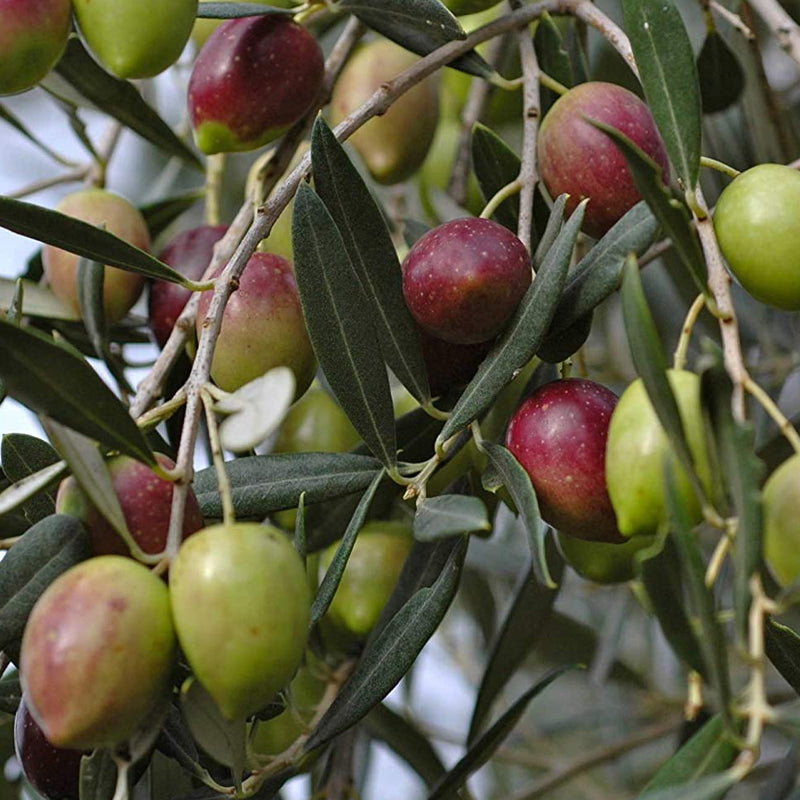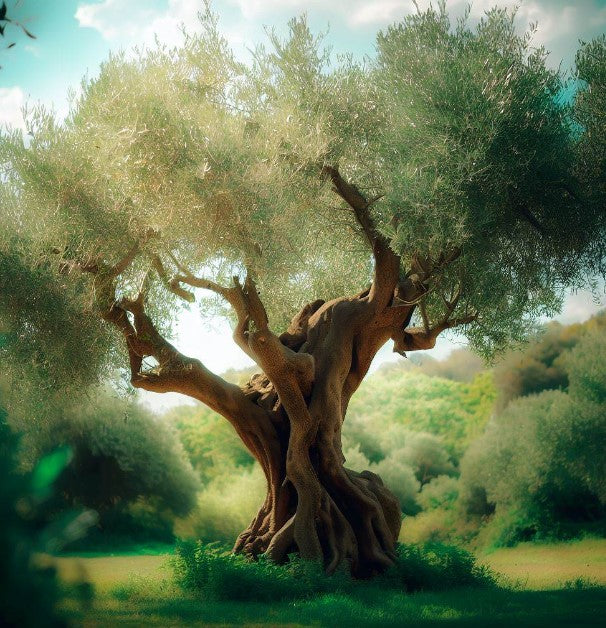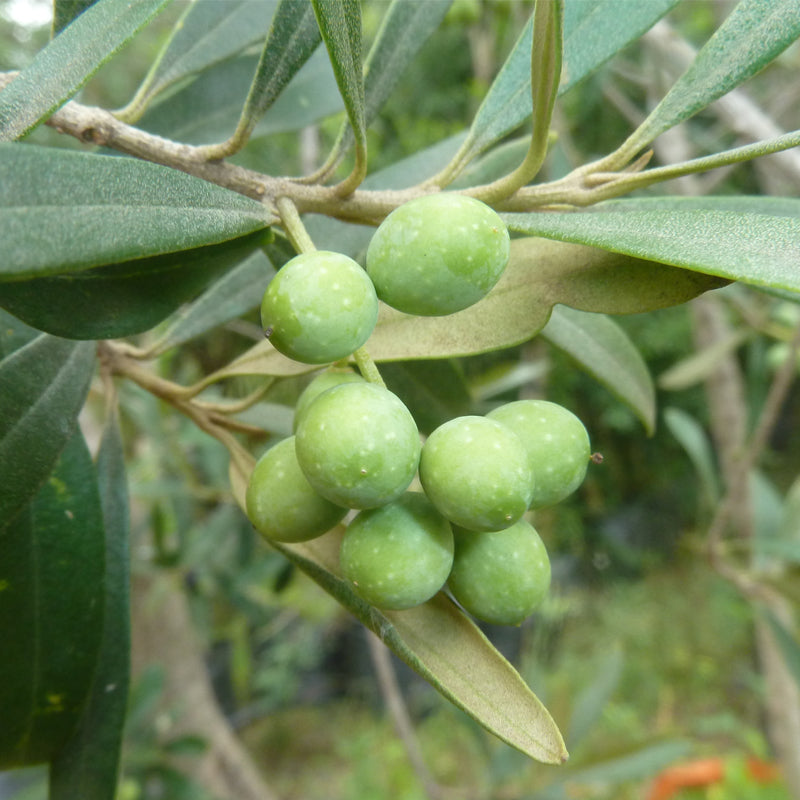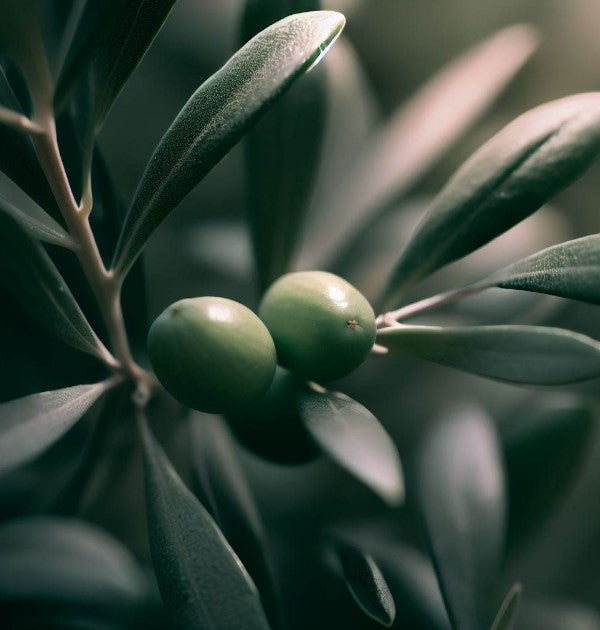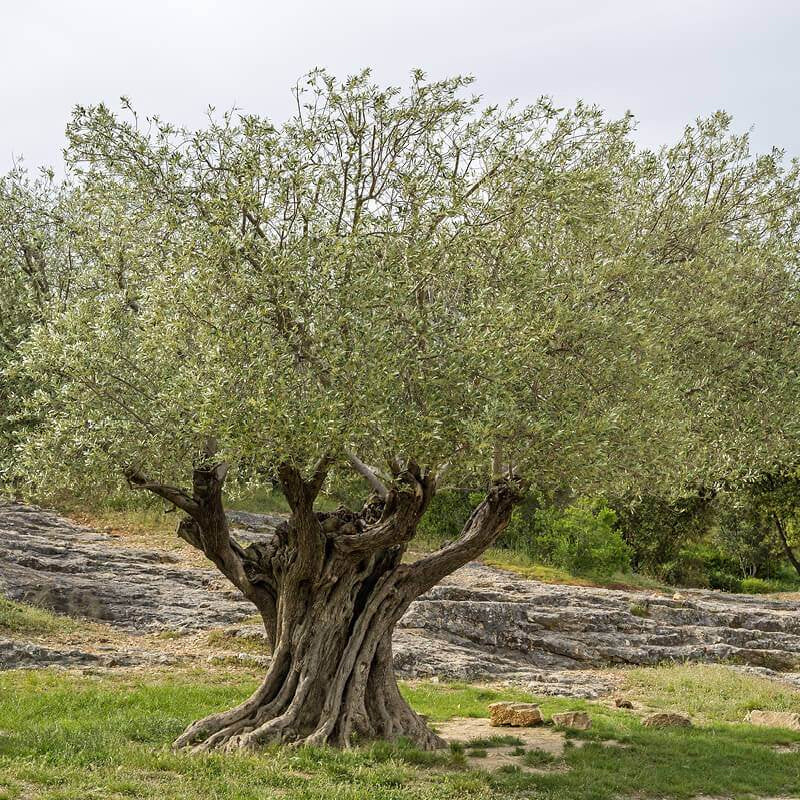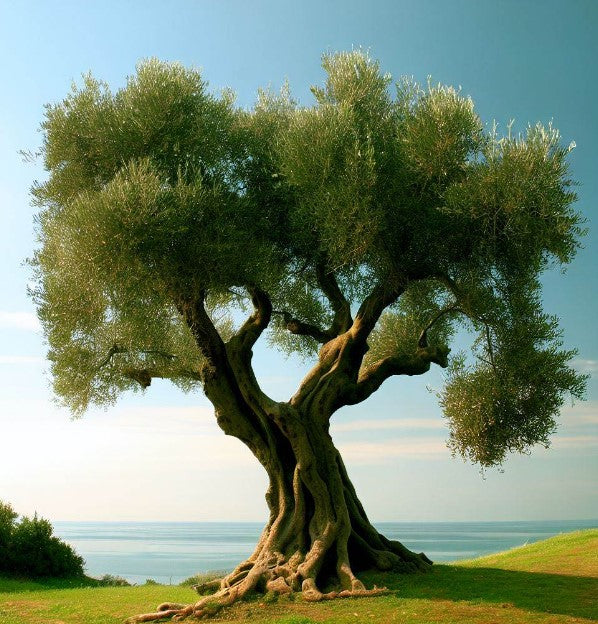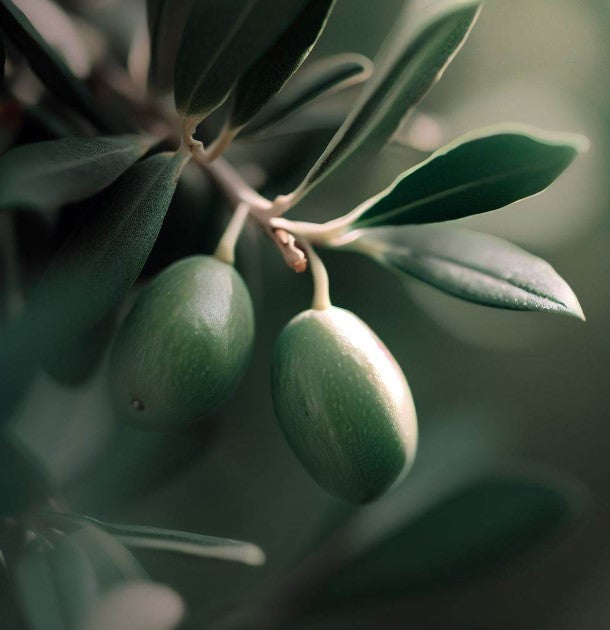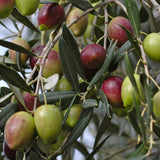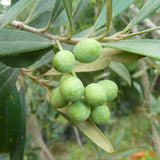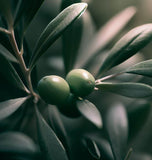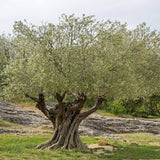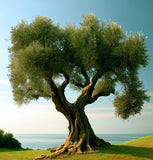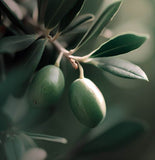Olea europaea (Olive Tree)
Olea europaea (Olive Tree) is a small to medium-sized evergreen tree native to the Mediterranean region. It is highly valued for its fruit, olives, and its historical and cultural significance. Here are some key features and characteristics of Olea europaea:
Appearance: The Olive Tree typically grows to a height of 20 to 40 feet (6 to 12 meters), although some varieties can reach greater heights. It has a gnarled and twisted trunk with grayish-brown bark. The leaves are leathery, elongated, and lance-shaped, with a gray-green color on the upper surface and a silvery underside. The tree's branches are often spread out and have a distinctive silver-gray hue.
Flowers and fruits: The Olive Tree produces small, creamy-white flowers that are often inconspicuous. They are typically borne in clusters and have a sweet fragrance. The flowers are wind-pollinated or rely on insect pollinators. Female flowers give rise to the fruit known as olives. Initially green, the olives mature to various shades of purple or black, depending on the variety. Olives are harvested for their culinary and oil-producing properties.
Culinary uses: Olives are widely used in Mediterranean cuisine and are known for their rich, savory flavor. They can be eaten fresh, pickled, or processed into olive oil. Olive oil, derived from the fruit's pressed oil, is a staple ingredient in cooking and is highly regarded for its health benefits and versatility.
Environmental adaptability: Olive Trees are well adapted to the Mediterranean climate, which is characterized by hot, dry summers and mild, rainy winters. They are known for their drought tolerance and ability to thrive in poor, rocky soils. However, they can also grow in a range of climates and soil types, as long as they receive sufficient sunlight and good drainage.
Ornamental use: Besides its economic and culinary value, the Olive Tree is often grown for its ornamental appeal. Its silver-gray foliage, twisted branches, and characteristically-shaped trunk make it an attractive addition to landscapes and gardens. It can be grown in containers, as a topiary, or as a standalone tree.
Longevity and growth rate: Olive Trees are known for their longevity. With proper care, they can live for several hundred years, and some ancient specimens are believed to be thousands of years old. However, their growth rate is relatively slow, particularly in the first few years of establishment.
Botanical Name : Olea europaea
Common Name : Olive Tree
Height : 30ft
Spread : 15 ft
Germination Info : 4 day water soak followed by 120 days warm stratification followed by 120 days cold stratification recommended
Hardiness zone : 9-11
Average seed per ounce : Approx. 63

